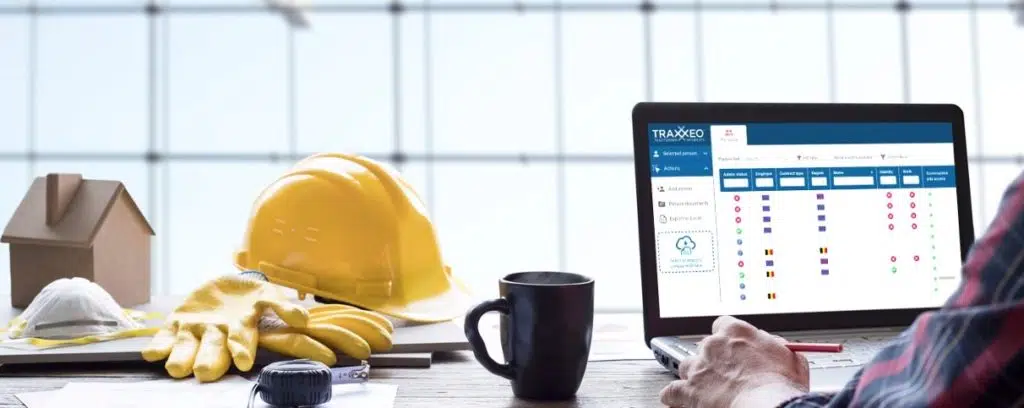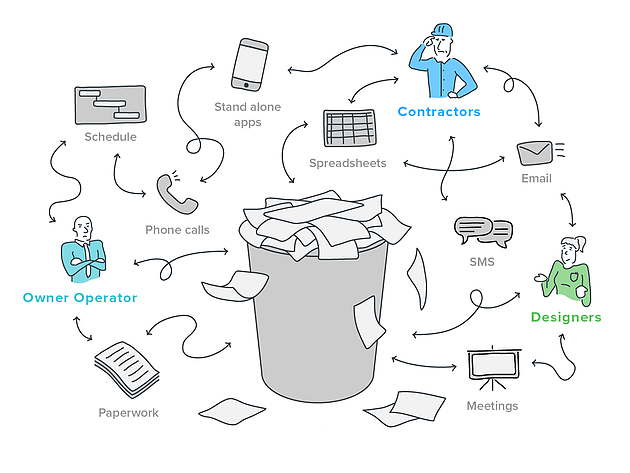Streamline Collaboration: The Power of Construction Document Management Solution
Streamline Collaboration: The Power of Construction Document Management Solution
Blog Article
Optimizing Task Cooperation: Architect's Finest Practices in Building Document Monitoring
In the complex world of architectural jobs, the reliable management of construction records stands as a foundation for success. Architects, with their careful focus to information and ingenious design remedies, are charged with orchestrating a symphony of stakeholders, timelines, and resources. Amidst this complexity exists a crucial concern: just how can architects streamline partnership procedures to boost job results? By checking out essential approaches such as leveraging cloud-based systems, establishing robust interaction protocols, and guaranteeing information safety and security, architects can elevate their file management practices to brand-new heights.
Leveraging Cloud-Based Platforms
By transitioning from traditional paper-based systems to shadow remedies, architects can streamline partnership, boost file accessibility, and boost general job performance. This availability advertises seamless interaction and coordination amongst job stakeholders, leading to fewer mistakes and delays in the construction process.
In addition, cloud-based systems offer a secure atmosphere for storing sensitive job info, supplying file encryption, routine backups, and user permission setups to secure data integrity. Designers can likewise take advantage of the scalability of cloud options, allowing them to adjust storage capacity and performance based upon task needs. On the whole, leveraging cloud-based platforms empowers architects to optimize their construction record monitoring processes, driving better collaboration, effectiveness, and success in their jobs.
Executing Variation Control Equipment
Having established the benefits of cloud-based systems in building paper management, architects can now enhance their document control processes by executing Version Control Equipment. Variation Control Equipment (VCS) are vital devices that track modifications in files, guaranteeing that team participants are constantly collaborating with the newest and most accurate details. By implementing VCS, designers can keep a central repository where all task files are saved, allowing seamless cooperation while lessening the risk of errors and variation disputes.
One key benefit of Variation Control Equipment is the ability to track the total background of document adjustments, allowing customers to go back to previous versions if needed (construction document management). This attribute is especially useful in building projects where style models and alterations prevail. VCS helps with better interaction amongst team members by giving a clear audit route of that made details changes and when they were made. This openness not only enhances accountability yet additionally helps in resolving conflicts or inconsistencies that may develop during the project lifecycle.
Developing Interaction Methods
To guarantee efficient and effective job sychronisation, designers need to develop clear and robust communication procedures within their building record administration procedures. Communication procedures define the techniques, regularity, and networks where staff member exchange information, updates, and feedback. One crucial element of developing these procedures is determining a central communication platform where all project-related discussions and file sharing can occur. This system could be a task administration software, e-mail threads, or cloud-based storage space services. By setting standards on exactly how information is shared and exactly how employee interact with each other, designers can enhance the circulation of data and stop pop over here miscommunications or delays in the building and construction process.
Moreover, interaction procedures must additionally include guidelines on just how to handle disputes, adjustment orders, and immediate issues that may arise during the task lifecycle. Establishing an organized method to interaction guarantees that all stakeholders get on the exact same page, advertises transparency, and inevitably adds to the successful completion of the construction job.
Making Use Of BIM Software Program for Coordination
BIM software plays a pivotal role in boosting control among task team participants in the construction sector. Structure Info Modeling (BIM) promotes collaboration by offering a centralized system where architects, designers, specialists, and various other stakeholders can interact in a collaborated manner. Through BIM software program, task individuals can access and upgrade a common design that has in-depth info regarding the structure design, building and construction parts, and task routines.

Furthermore, BIM software program allows real-time cooperation and interaction amongst employee, despite their physical area. With cloud-based BIM systems, job stakeholders can access the most up to date project details, track modifications, and make notified decisions immediately. On the whole, leveraging BIM software for control improves project effectiveness, productivity, and inevitably brings about effective task outcomes.
Ensuring Data Protection and Conformity
In the world of building document management, protecting data honesty and guaranteeing regulatory conformity are paramount factors to consider for engineers and various other job stakeholders. Architects need to implement durable protection procedures to shield sensitive job details from unapproved accessibility or violations. Making use of protected cloud storage options with encryption methods and access controls can aid minimize risks connected with information burglary or loss. Routinely upgrading software application and systems, performing security audits, and offering personnel training on information security ideal techniques are important actions in maintaining a secure environment for construction record monitoring.

Final Thought
Finally, architects can maximize task partnership in construction record administration by leveraging cloud-based systems, implementing variation control systems, establishing interaction methods, using BIM software program for control, and guaranteeing data protection and compliance. These best practices assist streamline the building and construction process, improve interaction among job stakeholders, and enhance effectiveness in job shipment. By following these guidelines, engineers can properly manage building and construction documents and assist in effective task results.
Through BIM software, job individuals can access and upgrade a common model that includes in-depth info regarding the building layout, construction components, and task routines.
With cloud-based BIM platforms, job stakeholders can access the most recent project info, track adjustments, and make notified choices immediately - construction document management. Generally, leveraging BIM software application for sychronisation boosts task effectiveness, performance, and ultimately leads to effective project end results
In verdict, architects can enhance project collaboration in building and construction document administration by leveraging cloud-based platforms, carrying out variation control systems, establishing interaction protocols, utilizing BIM software for control, and making sure information safety and conformity. These finest methods help improve the building and construction procedure, improve communication amongst task stakeholders, and enhance effectiveness in project distribution.
Report this page